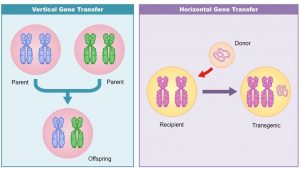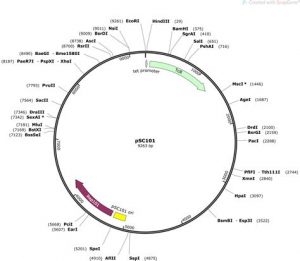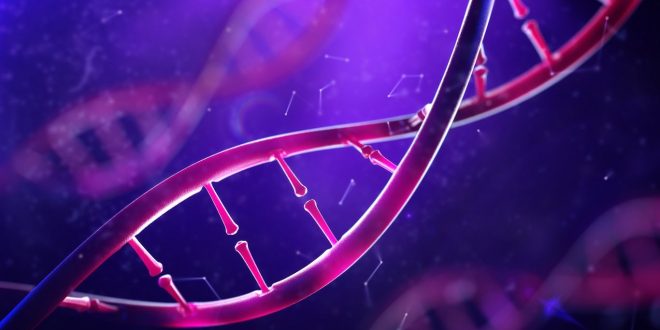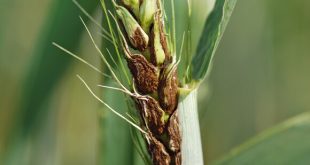If we want to know the subtle and intricate mechanism of life and how it revolves in molecular level, we must have to know about the basic fundamental concepts of molecular biology, an interdisciplinary branch of science which begins its journey with the amalgamation of some distinct disciplines such as biochemistry, genetics, microbiology, virology and physics. In the central part of molecular biology, what it resides, is the concept of genetic engineering and recombinant DNA technology which helps in the transfer of genes. So, let’s know about it first !!!
What is Genetic Engineering
Genetic engineering refers to the direct manipulation of DNA to alter an organism’s characteristics (phenotype) in a particular way. It is the process of genetic modification in which we change the genetic constitution of cells by introducing or eliminating specific genes using molecular biology techniques. We may denote it as the non sexual/asexual method of gene transfer. After genetic engineering the obtained DNA is known as recombinant DNA.

Paul Berg, a biochemist at Stanford who was among the first to produce a recombinant DNA molecule in 1972, he won the Nobel Prize in 1980.
Four Common Factors of GE
- Host
- Vector (For vector mediated transfer)
- Desired DNA/Target DNA
- Restriction Enzymes
What is Gene Transfer
Gene transfer is simply the insertion of non-related genetic information in the form of DNA into cells. It’s a very common process that we normally use in the study of molecular biology and genetic engineering. Gene transferring process usually can be of two types-
1. Vertical Gene Transfer (VGT): This is a process where genes are transferred vertically from parents to offspring. It may be through sexual or asexual reproduction.

(Source here)
2. Horizontal Gene Transfer (HGT): Also known as Lateral Gene Transfer or LGT, is the process where genes are transferred between unicellular organisms and/or multicellular organisms, other than the vertical transmission. Simply, it is the movement of genetic material from a donor organism to a recipient organism that is not its offspring. There are different mechanisms of HGT such as transformation, transduction and conjugation. We normally use vectors for horizontal gene transfer.
Based on the presence or absence of vectors, gene transfer again can be classified into two types-
1. Vectorless or direct gene transfer
Commonly used methods are-
a) Physical methods: Macroinjection, microinjection, protoplast fusion, biolistics transformation
b) Chemical methods: Use of DEAE, transfer of DNA using PEG etc.
c)Electrical methods: Electroporation, electrofusion

(Source here)
2. Vector mediated gene transfer
Using different types of vectors, for e.g. Plasmid vector, Cosmid Vector, Shuttle Vector etc.
What Is A Vector in Molecular Biology
In Molecular Biology, a Vector is a DNA molecule used as a vehicle to artificially carry foreign genetic material to another cell where it can be replicated and/or expressed. Vector usually consists of an insert (transgene) and a larger sequence that serves as the “backbone” of the vector
Vectors have three main objectives behind their use–
- Transferring genetic info to isolate the insert in target cell.
- Multiplication (Cloning) of the insert in target cell.
- Expression of the inset in target cell.

(Source here)
pSC101 was the first cloning vector used in 1973 by Herbert Boyer and Stanley Norman Cohen.
Important Features of a Vector
A vector should have the following features-
1. It should be fairly small DNA that is easy to isolate.
2. Must have an origin of replication.
3. It must contain marker gene such as tetR (for tetracycline resistance). This would help in selection of transformed cells from untransformed ones.
4. Must have at least one unique site for restriction enzyme.
5. It should contain specific control systems like promoters, terminators, ribosome binding sites etc.
Components of A Typical Transformation Vector
What is genetic transformation?
Genetic transformation is the process by which the genetic material carried by an individual cell is altered by the incorporation of foreign (exogenous) DNA into its genome.
A typical transformation vector contains the following components-
1. Promoter
Region of a DNA which is recognized by RNA polymerase in order to bind and and initiate transcription. Promoter 10 sequence is the consensus sequence TATAATG centered about 10bp before the startpoint of a bacterial gene. It is involved in the initial melting of DNA by RNA polymerase.

2. Intron or Intervening Sequence
Sequence of DNA interrupting the coding sequence of a gene. This part of a gene is transcribed but does not appear in the final mRNA transcript. It may also enhance gene expression.
3. Reporter Gene
It is the coding unit of a test gene whose product is easily assayed during genetic transformation. It may be connected to any promoter of interest so that expression of the gene can be used to assay promoter function. Reporter genes help to detect the inserted gene directly or catalyses specific reactions.
e.g. GUS, GFP, Luciferase etc.
4. Terminator
Gives a signal to terminate gene transcription
5. Selectable Marker Gene
A gene whose expression allows the identification of –
I)A specific trait or gene in an organism.
II) Cells that have been transformed or transfected with a vector containing. Shows resistance against specific chemical agent. It is often included in the vector to identify positively transformed cells.
6. Trait gene
Genes conferring the described characteristics. e.g. Insect resistance
7. Ori
Permits the efficient replication of plasmids to hundreds of cells/copies.
8. Vir genes
Virulence genes help in the transfer of T-DNA
>>>>>>>To continue, please look at the second part of the series, Link here<<<<<<
 Plantlet The Blogging Platform of Department of Botany, University of Dhaka
Plantlet The Blogging Platform of Department of Botany, University of Dhaka





